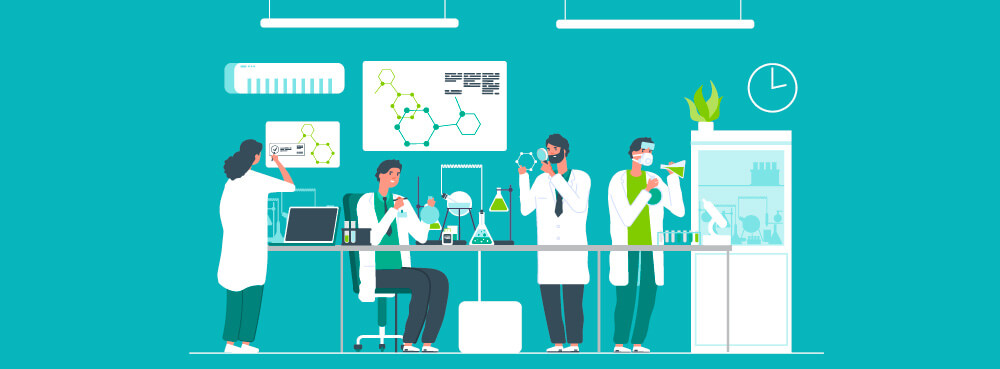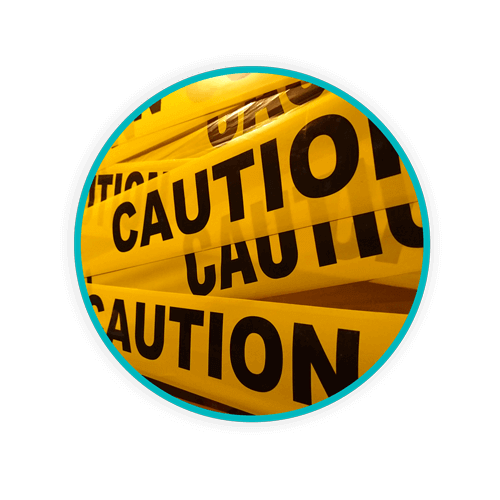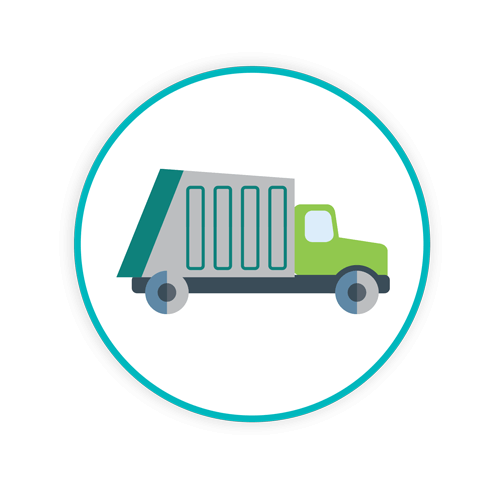Clinical Waste Considerations for Laboratories

Do you know your clinical waste obligations? Duty of care is as applicable to a laboratory facility as to a hospital when it comes to healthcare/medical waste. Regardless of size, laboratory waste should – like other types of medical waste – be properly segregated prior to disposal. As such, laboratory facilities are encouraged to follow regulatory guidelines in order to enhance safety, reduce risk and of course, maintain compliance to avoid fines and penalties.
Laboratory facilities have a responsibility to follow hazardous waste regulations, carriage regulations and specifically regulations associated with genetically modified organisms and other biological agents as per Control of Substances Hazardous to Health (COSHH) guidelines.
Clinical waste identification from laboratory facilities should take a number of issues into consideration.
SPEAK TO A CLINICAL WASTE EXPERT TODAY
TOPICS WE WILL COVER:
2 / Regarding Waste Classifications in Segregation
4 / About Packaging and Storage of Laboratory Waste
5 / Ready to Transport? Are you Sure?
6 / Sharpsmart Encourages Compliance
Is it Hazardous?
As per COSHH guidelines, simply acessing a hazard checklist can determine safety of products used by or generated by the laboratory. Items on the checklist may include:
- Does the product have a danger label?
- Does the laboratory process produce fumes, vapours, or gas, among other potentially inhalable chemicals?
- Is the substance harmful to the skin?
- Could this substance be harmful due to methods used to produce or use it?
- Can it be used in a safer way, or is it able to be controlled to reduce the risk of harm?
Any medicine produced in a laboratory might also be considered cytotoxic waste in regard to waste classification purposes if it is:
- Carcinogenic
- Acutely toxic
- Toxic for reproduction
- Mutagenic
A number of regulatory agencies and committees have produced documentation regarding the guidance for research and laboratory facilities including the Department of Health – Health Technical Memorandum (07-01: Safe Management of Healthcare Waste) as well as:
- Health Services Advisory Committee (HSAC)
- Advisory Committee on Dangerous Pathogens (ACDP)
- Scientific Advisory Committee for Genetic Modification Compendium of Guidance (SACGM)
Laboratories that work with infected animals, concentrations of pathogens, infected cell cultures, or clinical specimens that might contain pathogens involved in diagnostics such as microbiology and pathology should be well-versed in observance and compliance with regulations pertaining to laboratory facilities.
The ultimate goal of such regulations is to reduce risk of harm and to specifically categorise and segregate hazardous waste from non-hazardous waste.
Regarding Waste Classifications in Segregation
Among the most common types of hazardous waste produced by laboratories include solid or liquid microbiological cultures, pathogens, or biological agents stocks. Anatomical waste might also be infectious and can include biopsy and other tissue samples, as well as entire limbs or organs.
Sharps, scalpel blades, potentially contaminated broken glass or needles not contaminated with medicine or chemicals might also still be deemed hazardous waste. Other types of potentially infectious waste include clinical specimens and consumable items such as gloves and pipette tips.
Does your facility know how to properly package and dispose of such items? Some of this waste can be treated on-site through incineration, while sharps and some potentially infectious waste can be rendered safe at a licensed and permitted treatment facility.
There are sustainable disposal solutions for non-infectious or treated laboratory waste that have been autoclaved on-site such as ‘energy from waste’. This helps to reduce the volume of waste heading to landfills and instead, turns it into usable energy. Refer to the Department of Health Safe Management of Healthcare Waste guidelines to ensure proper waste classification and segregation.
Category A or B?
Per the regulations, infectious waste or substances are classified as either category A or B.
Category A is classified as “an infectious substance which is transported in a form that, when exposure to it occurs, is capable of causing permanent disability, life-threatening or fatal disease in humans or animals.”
Category B is defined as “an infectious substance which does not meet the criteria for inclusion in category A.”
Sharpsmart knows the law. We provide solutions and resources for facilities to stay compliant. Quite simply, we encourage all healthcare entities to know and follow regulations.
About Packaging and Storage of Laboratory Waste
Knowledge of packaging, labeling, and storage guidelines is essential, especially when potentially infectious waste is transported off-site. Carriage of dangerous goods is covered by the Health and Safety Executive manual and guidelines produced by the International Carriage of Dangerous Goods by Road (ADR), updated January 2017.
Packaging of infectious waste in preparation for transport as well as appropriate marking and labeling is required. When inactivated waste is stored on-site, it must be stored in such a way as to restrict access to only authorised users and transported only to the autoclave.
Only licensed contractors should be utilised for transportation off-site. It is the responsibility of the medical waste producer to verify that the contractor is also knowledgeable and compliant with transportation guidelines.
Ready to Transport? Are you Sure?
Every member of your laboratory staff should be familiar with the definitions of microbiological cultures. This also applies to transportation guidelines. Regulations quite clearly define specific guidelines for liquid or solid forms of cultures, which depend on whether the waste came from a patient specimen or a laboratory stock.
Increased risk of potential infection occurs with cultures containing high concentrations of microorganisms. The key for all employees in the laboratory environment is to be able to answer one question if an exposure were to occur: would the substance be capable of causing permanent disability, potentially life-threatening symptoms, or even a fatal disease process in a human or animal?
Regulations also go on to state that whether classified in either category A or B, pathogen cultures should be rendered inactive on-site prior to final disposal.
Err on the side of caution, especially when it’s uncertain whether a culture or laboratory waste contains a potentially infectious substance. Upon discarding, clinical specimens become a component of laboratory waste streams that needs to be appropriately handled and/or managed.
Waste that has been autoclaved on-site is not considered hazardous or infectious. Nevertheless, further treatment is common due to public perception of clinical laboratory waste. Because of this, inactivated or non-hazardous waste should be considered as offensive waste and handled and disposed of appropriately.
Sharpsmart Encourages Compliance
Sharpsmart has long provided resources, education, and products to ensure compliance to healthcare sectors including research, university, and laboratory facilities as well as hospitals, care homes, GPs, pharmacies and walk-in centres. Compliance is vital in reducing risk of exposure of hazardous substances to health care workers and the general public. For information on Sharpsmart solutions, products, and services, contact us today.
Let's Talk!
Your time is valuable, and we don’t want to play hard to get. You can either phone us directly on the details listed on our contact page, or feel free to fill out this short form and one of our team members will get back to you as quickly as possible.
